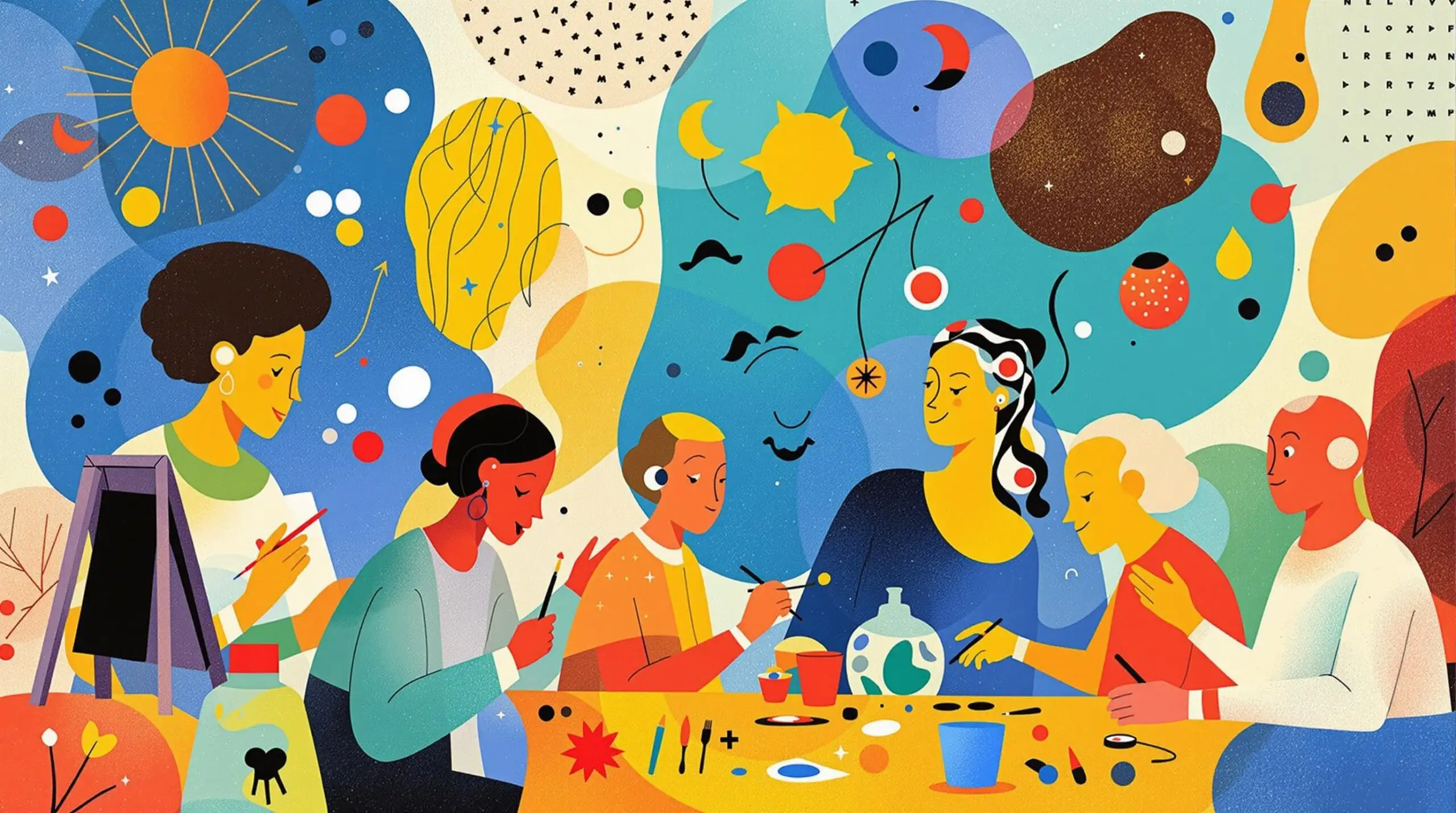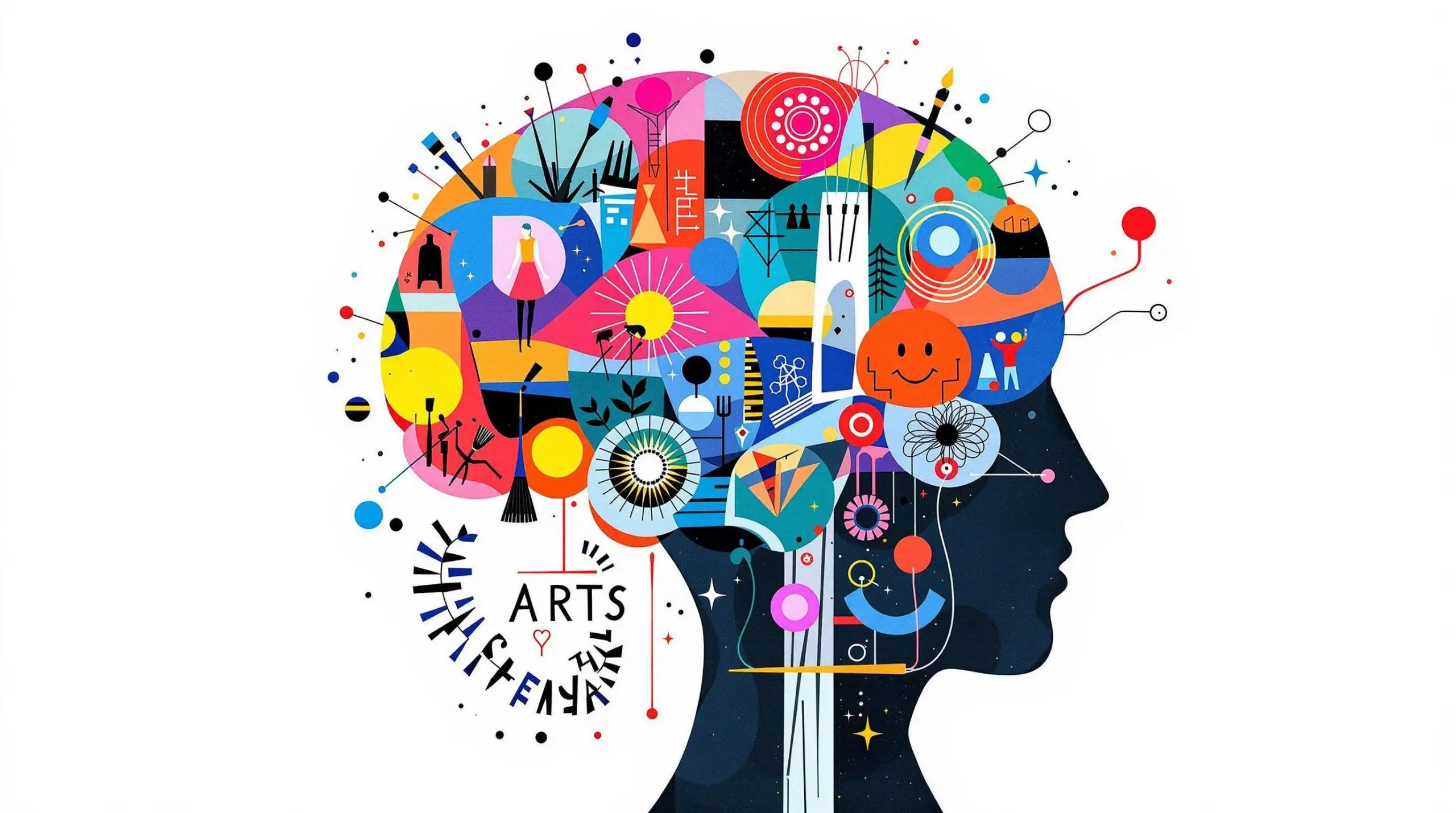Art Therapy: Creativity’s Role in Preventing Cognitive Decline
Explore how art therapy can harness creativity to help prevent cognitive decline.

Understanding Art Therapy and Cognitive Health: The Basics
What is Art Therapy and How Does it Affect Brain Health?
Art therapy isn’t just about creating pretty pictures – it’s a scientifically-backed approach to maintaining brain health. This therapeutic practice combines creative expression with psychological techniques, offering a powerful tool for cognitive preservation. Research shows that engaging in artistic activities stimulates multiple brain regions simultaneously, creating new neural pathways and strengthening existing ones.
The Science Behind Creative Expression and Brain Function
When we create art, our brains light up like fireworks. MRI studies reveal increased activity in areas responsible for memory, attention, and executive function. The physical act of drawing, painting, or sculpting engages both fine motor skills and visual processing centers. Meanwhile, the decision-making involved in choosing colors, shapes, and compositions activates our prefrontal cortex – the brain’s command center.
Historical Context and Modern Research
The therapeutic use of art dates back to the 1940s, but recent neuroscience has revealed its true potential. Studies comparing artists to non-artists show significant differences in brain structure and function. The groundbreaking 2017 Mayo Clinic study found that people who engage in artistic activities during middle age are 73% less likely to develop mild cognitive impairment in their later years.
Common Misconceptions About Art Therapy
The biggest myth? That you need artistic talent to benefit from art therapy. Scientific evidence shows that the cognitive benefits come from the process, not the end product. Another misconception is that art therapy is only for children or those with existing cognitive issues. In reality, it’s a preventive tool that’s effective for all ages and cognitive levels.
Statistics and Research Findings
The numbers paint a compelling picture. Studies indicate that regular participation in creative activities can reduce the risk of dementia by up to 45%. Research from the National Institute on Aging shows that art therapy participants demonstrate improved memory recall by 20% compared to control groups. These improvements persist even months after the creative sessions end.

Current Applications of Art Therapy in Cognitive Health
Modern Approaches to Art Therapy
Today’s art therapy programs incorporate digital tools alongside traditional mediums. Virtual reality painting programs offer immersive experiences for those with limited mobility. Group art therapy sessions provide social interaction – another crucial factor in cognitive health. These modern approaches make art therapy more accessible and engaging for diverse populations.
Integration with Other Cognitive Health Strategies
Art therapy works best as part of a comprehensive brain health strategy. Combined with physical exercise, proper nutrition, and social engagement, creative activities create a powerful defense against cognitive decline. Research shows this integrated approach can improve cognitive function scores by up to 25% in older adults.
The Mechanisms of Art Therapy and Brain Health
Neural Plasticity and Creative Expression
Creating art actively promotes neuroplasticity – the brain’s ability to form new connections. Each brush stroke or sculptural decision triggers synaptic firing, strengthening neural networks. This process is particularly active in areas controlling memory, attention, and spatial awareness. Regular artistic practice essentially gives these brain regions a consistent workout.
Emotional Processing and Cognitive Function
Art therapy uniquely combines cognitive and emotional processing. This dual activation strengthens the connection between the brain’s logical and emotional centers. Studies show this integration helps reduce stress hormones like cortisol, which are known to accelerate cognitive decline. The emotional release through art also improves mood and reduces anxiety, creating optimal conditions for brain health.
Key Areas of Impact
Several cognitive domains show marked improvement through art therapy. Visual processing speed typically increases by 15-20%. Working memory capacity often expands by up to 30%. Executive function – including planning and decision-making – shows enhancement in 80% of participants. These improvements are particularly pronounced when art therapy is practiced consistently over time.
Practical Implementation of Art Therapy
- Start with simple drawing exercises for 15 minutes daily
- Experiment with different art materials and techniques
- Join community art classes for social interaction
- Practice mindful coloring during stress relief breaks
- Create a dedicated space for artistic activities
- Document your creative process in a journal
- Try both digital and traditional art forms
- Participate in group art projects
- Set regular creative practice times
- Share your artwork with others to build social connections
The Future of Art Therapy in Cognitive Health
Emerging research in art therapy shows incredible promise. Scientists are developing AI-powered art tools that adapt to individual cognitive needs. New studies are exploring how different art forms affect specific brain regions. Virtual reality art therapy programs are being designed to provide immersive experiences for those with limited mobility.
Therapeutic Applications Across Age Groups
Art therapy benefits vary across different life stages. Children show improved cognitive development and emotional regulation. Adults experience stress reduction and enhanced problem-solving abilities. Seniors demonstrate better memory retention and reduced risk of cognitive decline. Each age group requires specific approaches to maximize these benefits.
Measuring Success in Art Therapy
Assessment Methods and Outcomes
Progress in art therapy can be measured through various metrics. Cognitive assessments show improvements in memory, attention, and processing speed. Brain imaging reveals increased activity in key regions. Quality of life measurements indicate enhanced emotional well-being and social connection. These outcomes provide concrete evidence of art therapy’s effectiveness.
Long-term Benefits and Prevention
The protective effects of art therapy extend well beyond the creative sessions. Regular participants show sustained cognitive improvements for years after beginning their practice. The risk of developing neurodegenerative conditions decreases significantly. Social connections formed through group art activities continue to support brain health long-term.
Practical Guidelines for Implementation
- Begin with 15-30 minute sessions, 3 times per week
- Choose art activities that bring joy and engagement
- Maintain a consistent practice schedule
- Document progress through photos or journals
- Join art therapy groups for social support
- Combine art practice with other brain-healthy activities
- Stay open to trying new art forms and techniques
- Create a comfortable, well-lit art space
- Set achievable creative goals
- Celebrate progress and creative expression
Art therapy stands as a powerful tool in preventing cognitive decline. Its combination of creative expression, cognitive engagement, and emotional processing provides unique benefits for brain health. The evidence shows clear improvements in memory, attention, and overall cognitive function. By incorporating regular artistic practice into our lives, we can actively support our brain health while experiencing the joy of creation. The key lies in consistent engagement, openness to various art forms, and recognition that every creative act contributes to cognitive wellness.